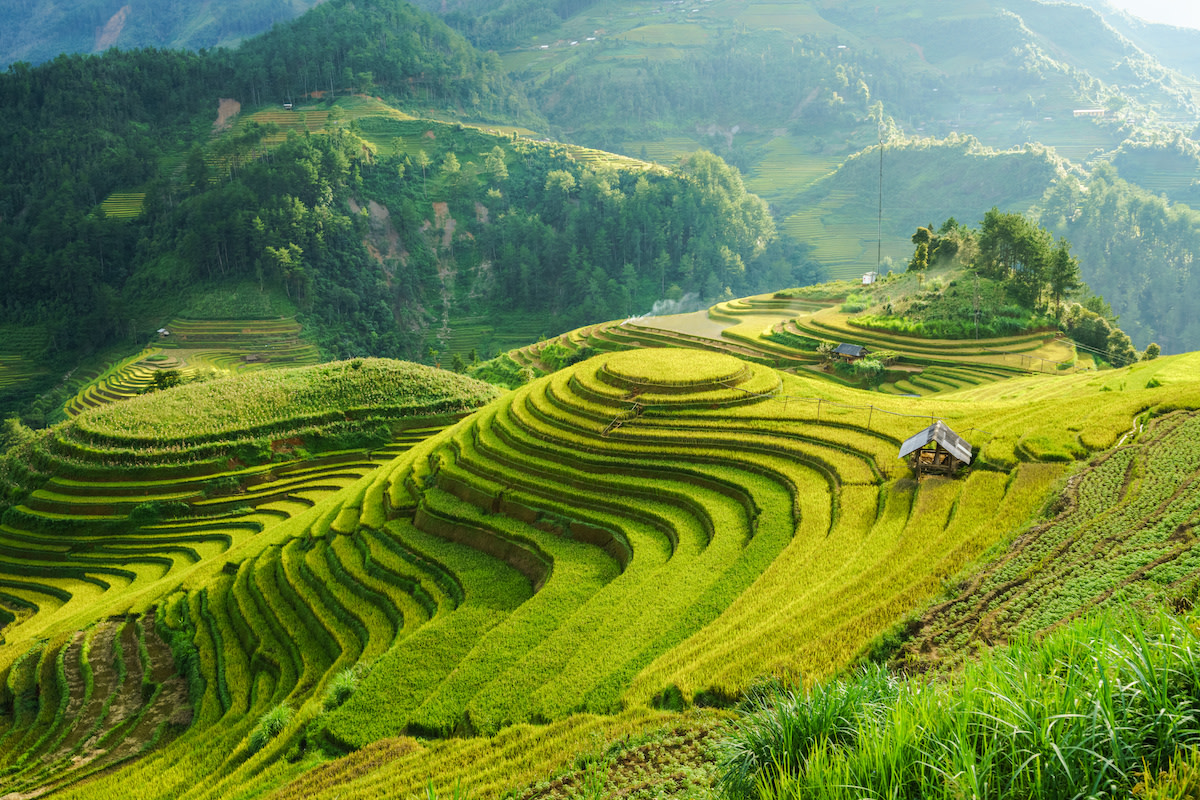What Is Terrace Farming? How Terracing Works in Agriculture
Written by MasterClass
Last updated: Dec 8, 2022 • 3 min read
A strategic farming method, terrace cultivation gives farmers greater control over water flow and soil erosion to maximize land use in hilly areas without sacrificing crop quality. Learn about the history and benefits of terrace farming.
Learn From the Best
What Is Terrace Farming?
Terrace farming is an agricultural practice farmers employ on steep slopes, hilly areas, and higher altitudes. Terrace farmers construct successive layers of flat areas on mountainsides or other terrains with steep inclines to better control soil conservation and runoff water. These levels look like staircase steps and create more apparent segments of arable land without harming the surrounding ecosystem.
Growing crops along steep slopes can be challenging, so terrace farming turns the topography into better agricultural land. Creating terrace fields is labor-intensive, but the crop yield is worth it. Without terraces, soil erosion worsens, and water flows to the base of the hill, carrying nutrients and seeds. Level terraces allow farmers to control water conservation and more evenly feed their crops.
A Brief History of Terrace Farming
The practice of terrace farming goes back to ancient times. With their tiered levels, Mesopotamian ziggurats exemplify the shape of terrace farming, and the Hanging Gardens of Babylon also made use of these bench terraces (flat areas with nearly vertical sides) to produce fertile soil. In South America, Andes farmers used the practice of terrace farming, as did the Incas at Machu Picchu in Peru.
Today, tiered rice paddies are a standard fixture in various parts of Southeast Asia, including Vietnam and Indonesia. In 1995, the UNESCO World Heritage Centre designated the Rice Terraces of the Philippine Cordilleras a UNESCO World Heritage Site because of the locals’ versatile use of this farming technique in their rice fields.
How Does Terrace Farming Work?
Terrace farming flattens the slopes of mountainsides to turn steep land into flat, arable space. Hillsides experience intense water runoff, which can increase in velocity as snow or rainfall accelerates down an incline. In extreme weather, such runoff can develop into dangerous mudslides.
As it runs down the mountain, water takes topsoil (and soil nutrients) with it, causing quicker land erosion and greater soil saturation at the base. Terrace farming stops this. One of the significant benefits of terrace farming is how it creates tiers of flat land on a mountain to stop mudslides from growing and to hold water in controlled amounts at each level. This makes it easier to care for crops and increases their chances of survival.
4 Advantages of Terrace Farming
Terrace farming is common for cultivating culinary herbs, legumes, rice, and other grains. Some of the advantages of terrace farming include:
- 1. Improved land productivity: Without terrace farming, much of a hillside would be unusable as farmland. Terrace farming makes these areas fertile.
- 2. Increased food security: Terracing gives farmers more control over the land they till and the water it receives. This increases food security by guaranteeing safer growing conditions.
- 3. Maximized crop production: Runoff can go to the base of a mountain, but terraces prevent the water from moving beyond a single layer. This puts the water to better use and maximizes crop production.
- 4. Prevention of soil erosion: Rainfall takes soil with it, leading to erosion. Terrace farming mitigates the effects of erosion by slowing water runoff and trapping it in individual layers along the incline.
3 Disadvantages of Terrace Farming
Terrace cultivation turns steep inclines into arable land, but there are some disadvantages to this farming practice. Drawbacks include:
- 1. Intensive labor: Terraces are challenging to construct. They take a lot of time and effort to create correctly, and often, because of the steep inclines involved, farmers cannot rely on heavy machinery to ease the job.
- 2. Reliance on precision: When you’ve properly constructed them, terraces can house the right amount of water, but if not, they can hold excess water. Oversaturation can mar vegetation. If not entirely flat, sloped land areas might also suffer water loss.
- 3. Upkeep requirements: Farmers must take good care to ensure their terraces’ soil is healthy and fertile. Not doing so can lead to infertile land and dead crops.
Eat With Intention
See food like you have never seen it before. With the MasterClass Annual Membership, journalist and educator Michael Pollan teaches you how to determine your ingredient sources, shop at the grocery store, and rethink your relationship to food.
